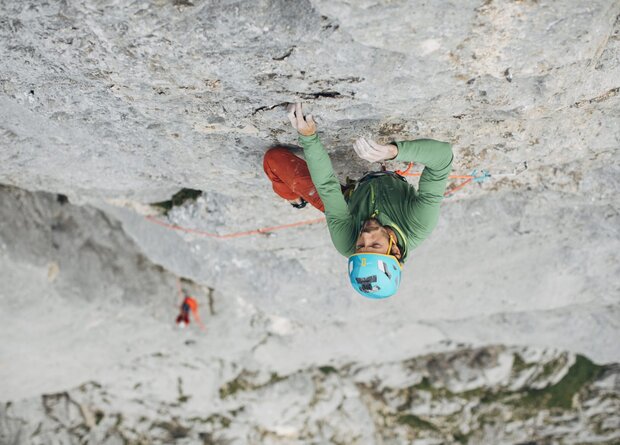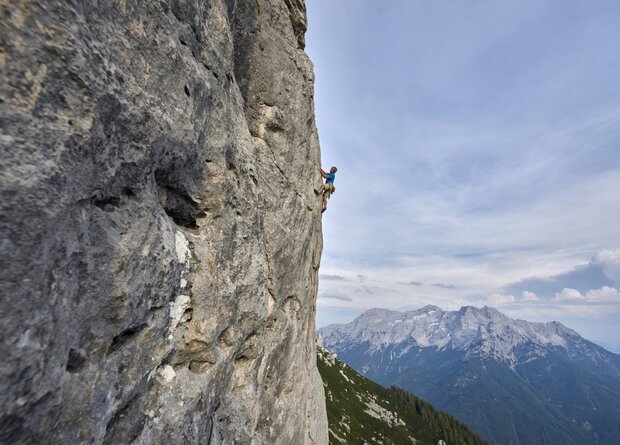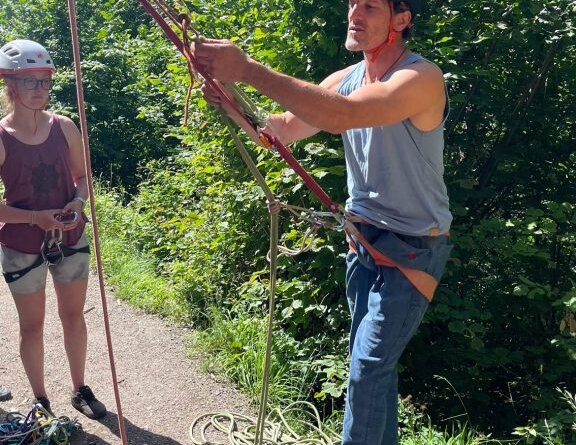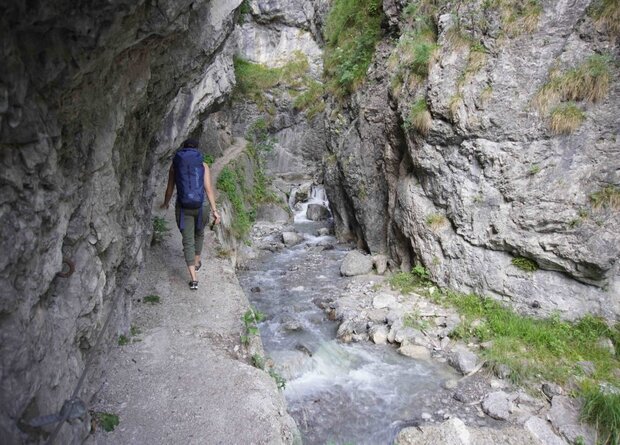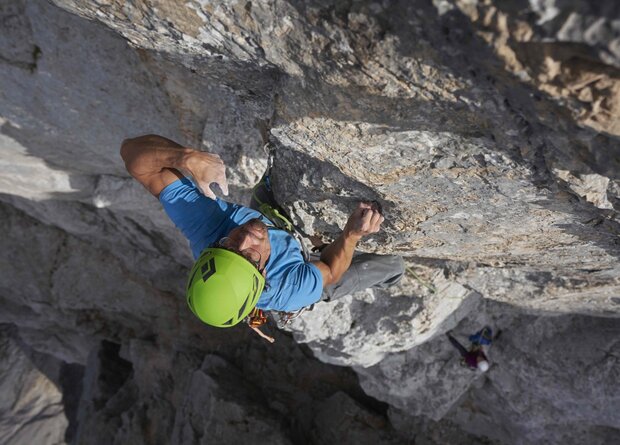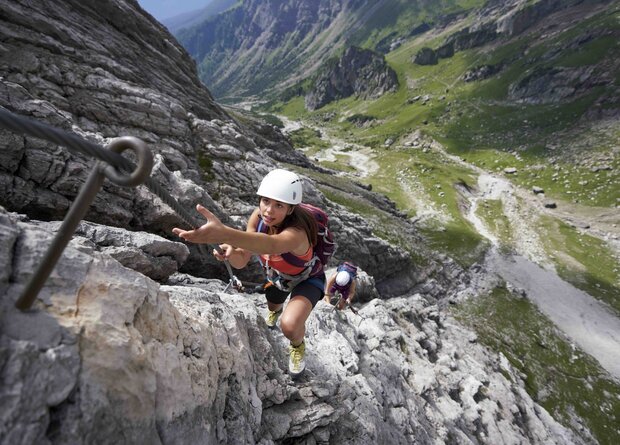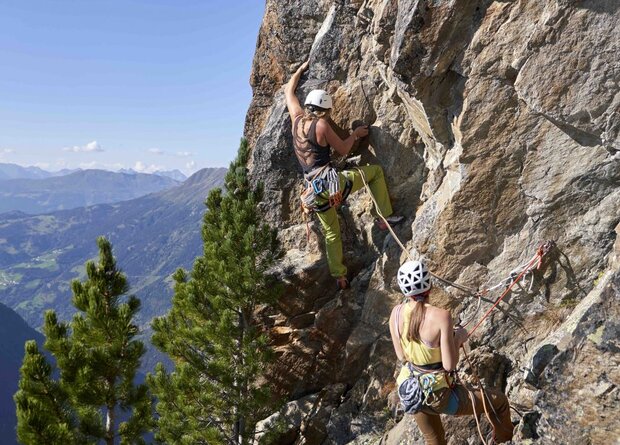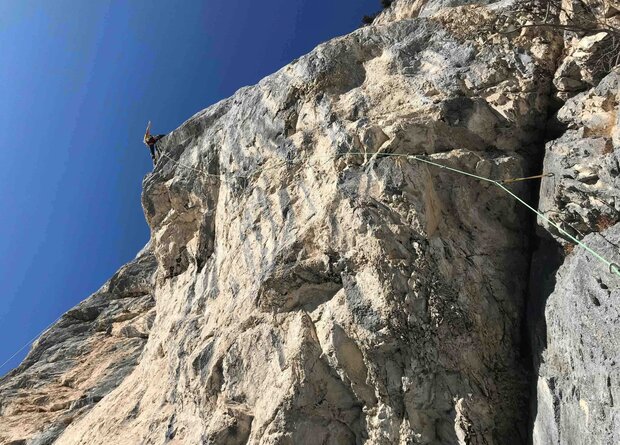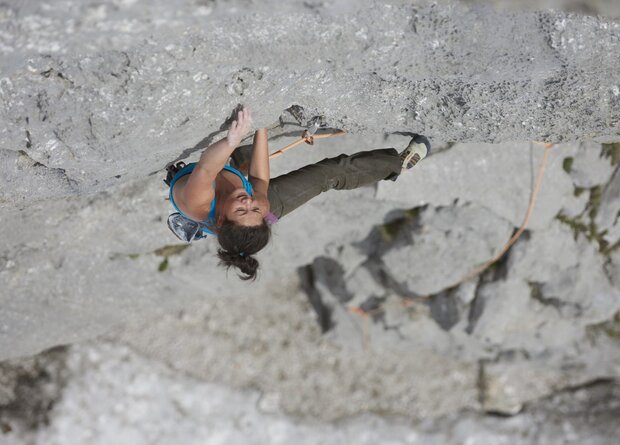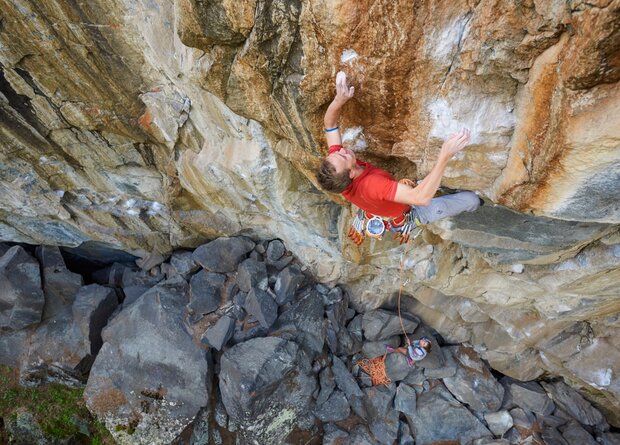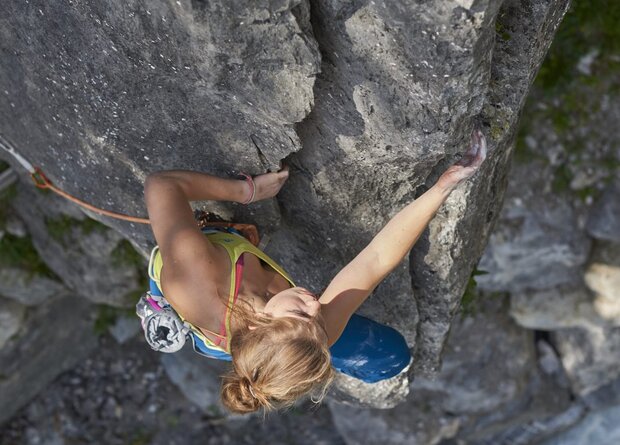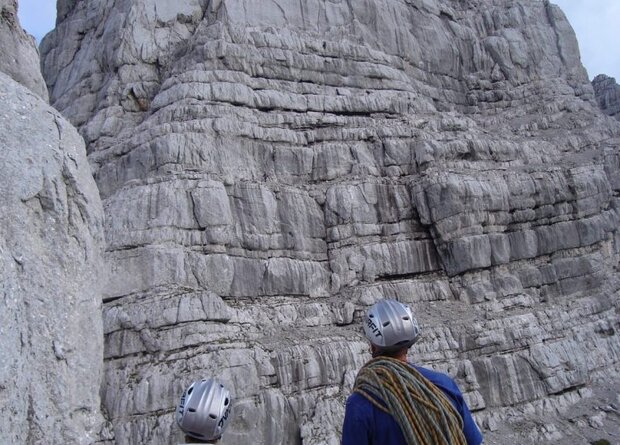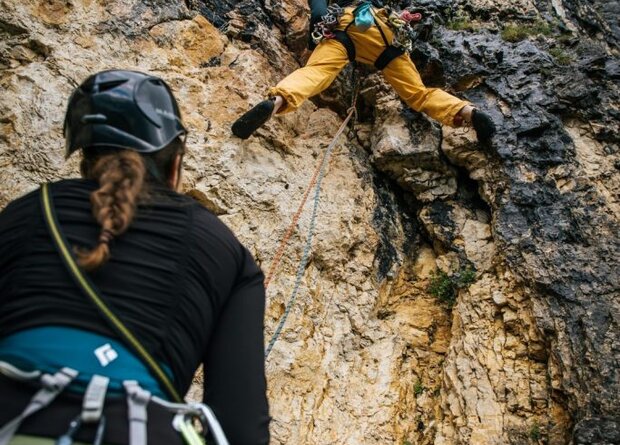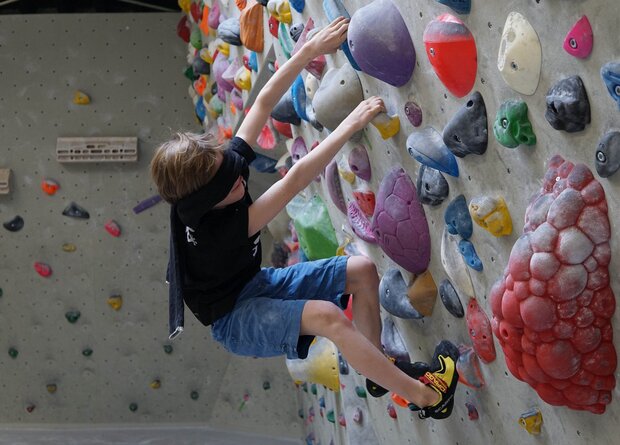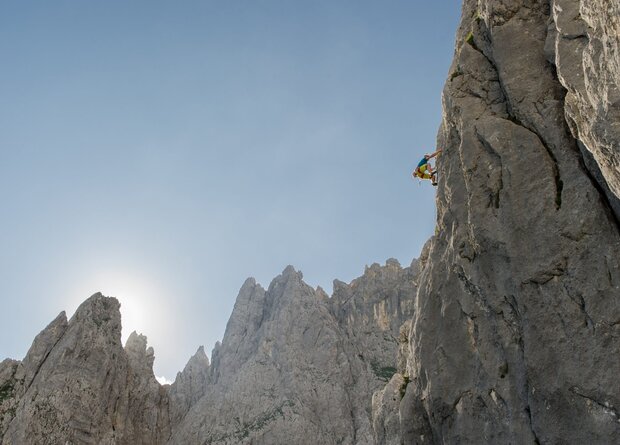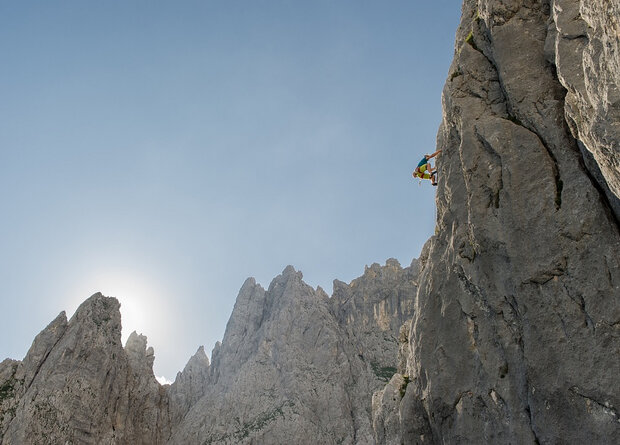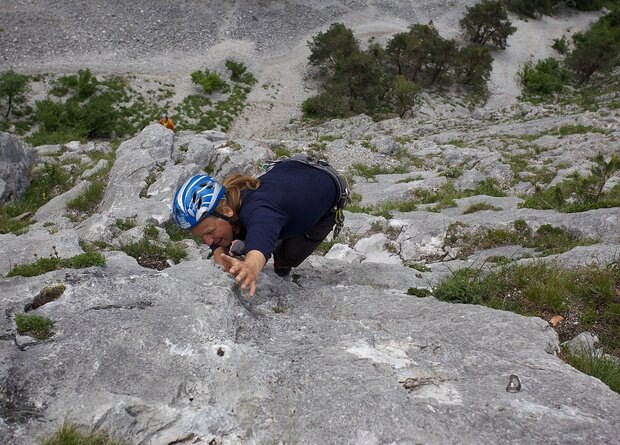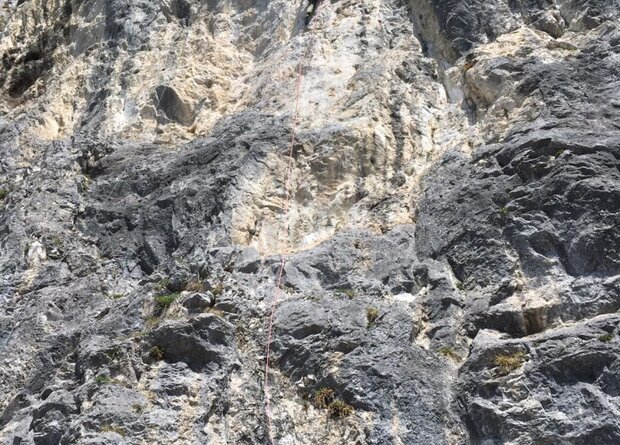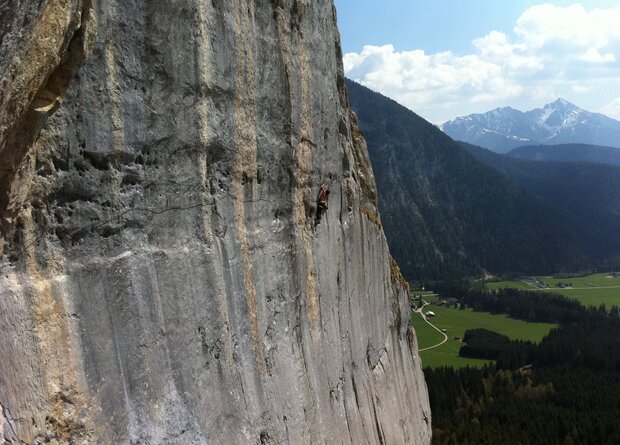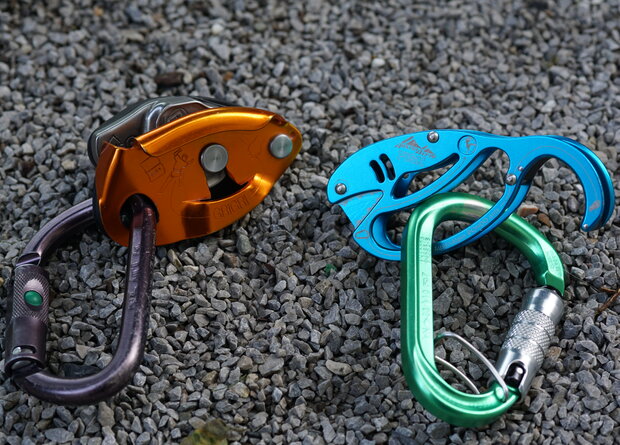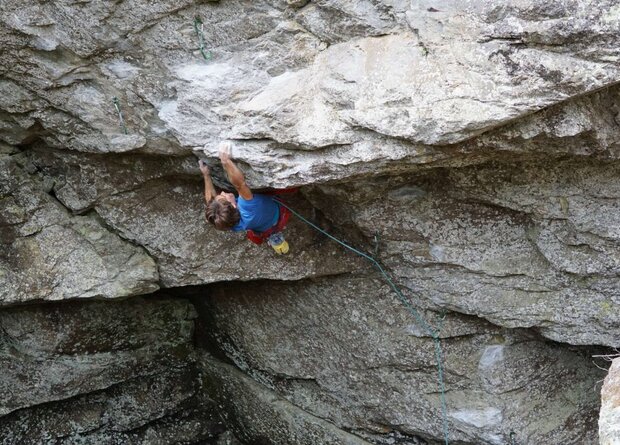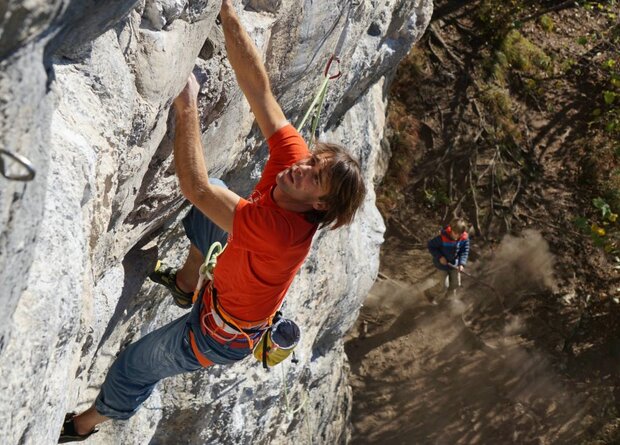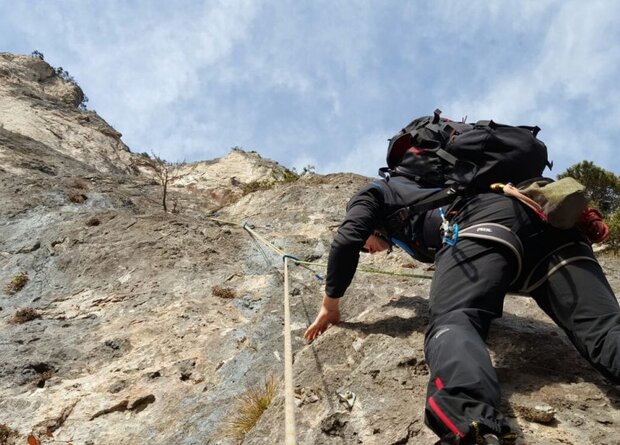It's just a normal climbing evening in the new climbing hall in Telfs, the Bergstation. A couple of guys from our Mauerfix climbing group take a closer look at the lead climbing area and try out the new test pieces from Angy Eiter and Co. Suddenly, the thing that every climber fears happens. One of the Mauerfix falls from 12m almost unchecked to the ground. It ends relatively lightly. Our Pietro escapes with a broken leg and a scare.
The facts: A new mammoth rope with a diameter of around 9 mm in combination with the old Grigri. The rope command "Close" comes a little late, at exactly the same moment as Pietro sits down. Too little time for the belayer to pull in the slack rope completely. The subsequent fall comes as a surprise, the old Grigri blocks just before reaching the ground. This last braking impulse in combination with the somewhat cushioning safety floor prevent the worst.
On this occasion, we take the opportunity to inform you about new belay devices, trends and dangers in sport climbing.
The partner check
Introduced many years ago by the Alpine Club, the partner check is now a traffic standard and therefore clearly mandatory. The partner check means that the climber and belayer check each other before starting to climb. This involves making sure that the knot is correctly threaded and, above all, tied, that the climbing harness is properly fastened, that the belay device is correctly attached and the locking carabiner is closed and that there is a knot in the end of the rope. Climbers may only start their tour after this check.
Abseiling eights, tubers and HMS
The trend in sport climbing is clearly towards ever thinner single ropes. The classic climbing rope used to have a diameter of 10mm and was 50m long. Today, the ambitious sport climber buys ropes with a diameter of 9mm, ideally 70m or 80m long due to the many new routes over 35m in length. This trend has of course also had an impact on belay devices. Abseiling eights and old tubers such as the Reverso 1 or Reverso 2 are life-threatening in combination with the new thin single ropes!
The classic HMS knot still has its raison d'être due to its simplicity, versatility and acceptable braking effect, but should primarily be used on multi-pitch routes.
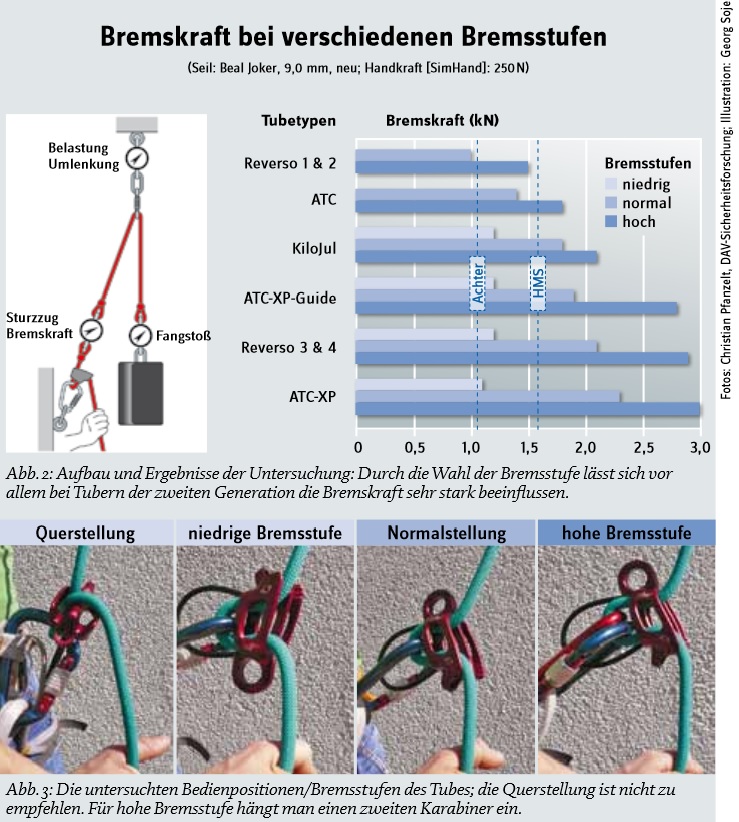
Semi-automatic devices
Modern sport climbers today belay with semi-automatic devices. These are belay devices that automatically block in the event of a fall and thus reduce the risk of falling to the ground. However, the most recent accident in our own climbing group has shown that there are also a few things to bear in mind with semi-automatic devices. First and foremost, the brake hand principle should be mentioned here, which means that one hand must always be on the brake rope regardless of whether the belay device blocks automatically or not.
With the Grigri, the gas work method has become established, which allows the rope to be released quickly, but also fulfills the brake hand principle at all times. Here is a video on how to use the gas work method:
As already mentioned, the combination of belay device and rope is an absolutely central issue with semi-automatic devices, as we saw in the accident in the climbing hall in Telfs. The rope diameter must match the belay device used. The old Grigri is approved for single ropes between 10mm and 11mm. In combination with a new 9mm rope, it is an absolutely dangerous device, but very comfortable with thick static ropes or older, wider single ropes.
The large group of autotubers
Semi-automatic tubers have become very popular. Smart, Ergo, Fish or Clickup are probably the most common devices on the market and work with a similar locking principle. The braking effect is consistently good and the use of thin single ropes is not a problem. However, it is important to ensure that the autotuber is inserted correctly and that a suitable carabiner with a round shank is used. Most manufacturers supply the devices with a suitable carabiner anyway.
The FISH from Austrialpin that we tested works excellently with all single rope diameters. We even used it when working on a thick static rope and can recommend it with a clear conscience. It is supplied with a three-way twistlock and is also very suitable for children thanks to its release lever.
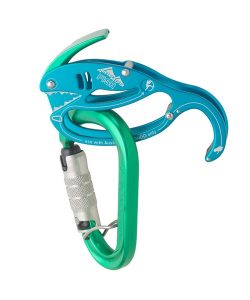
At this point we would like to warn against the Trango Cinch. There is a real danger to life if the brake hand principle is not observed. As a semi-automatic, it should be judged very critically and can only be used safely with a great deal of practice.
With this article, we hope that we have shed some light on the fuse jungle. Pietro's accident was another lesson for us, as our boss Mauerfux Patrick put it in a nutshell: "We're just not playing chess." Get well soon to our senior Mauerfux. See you at the crag!

